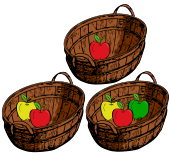
Back Иԥсабаратәу ахыԥхьаӡара Abkhazian Natuurlike getal Afrikaans Natürliche Zahl ALS የተፈጥሮ ቁጥር Amharic Numero natural AN प्राकृतिक संख्या ANP عدد طبيعي Arabic عاداد طبيعي ARY عدد طبيعى ARZ স্বাভাৱিক সংখ্যা Assamese

In mathematics, the natural numbers are the numbers 0, 1, 2, 3, and so on, possibly excluding 0.[1] Some start counting with 0, defining the natural numbers as the non-negative integers 0, 1, 2, 3, ..., while others start with 1, defining them as the positive integers 1, 2, 3, ... .[a] Some authors acknowledge both definitions whenever convenient.[2] Sometimes, the whole numbers are the natural numbers plus zero. In other cases, the whole numbers refer to all of the integers, including negative integers.[3] The counting numbers are another term for the natural numbers, particularly in primary school education, and are ambiguous as well although typically start at 1.[4]
The natural numbers are used for counting things, like "there are six coins on the table", in which case they are called cardinal numbers. They are also used to put things in order, like "this is the third largest city in the country", which are called ordinal numbers. Natural numbers are also used as labels, like jersey numbers on a sports team, where they serve as nominal numbers and do not have mathematical properties.[5]
The natural numbers form a set, commonly symbolized as a bold N or blackboard bold . Many other number sets are built from the natural numbers. For example, the integers are made by adding 0 and negative numbers. The rational numbers add fractions, and the real numbers add infinite decimals. Complex numbers add the square root of −1. This chain of extensions canonically embeds the natural numbers in the other number systems.[6][7]
Natural numbers are studied in different areas of math. Number theory looks at things like how numbers divide evenly (divisibility), or how prime numbers are spread out. Combinatorics studies counting and arranging numbered objects, such as partitions and enumerations.
- ^ Cite error: The named reference
Endertonwas invoked but never defined (see the help page). - ^ Weisstein, Eric W. "Natural Number". mathworld.wolfram.com. Retrieved 11 August 2020.
- ^ Ganssle, Jack G. & Barr, Michael (2003). "integer". Embedded Systems Dictionary. Taylor & Francis. pp. 138 (integer), 247 (signed integer), & 276 (unsigned integer). ISBN 978-1-57820-120-4. Archived from the original on 29 March 2017. Retrieved 28 March 2017 – via Google Books.
- ^ Weisstein, Eric W. "Counting Number". MathWorld.
- ^ Woodin, Greg; Winter, Bodo (2024). "Numbers in Context: Cardinals, Ordinals, and Nominals in American English". Cognitive Science. 48 (6) e13471. doi:10.1111/cogs.13471. PMC 11475258. PMID 38895756.
- ^ Mendelson (2008, p. x) says: "The whole fantastic hierarchy of number systems is built up by purely set-theoretic means from a few simple assumptions about natural numbers."
- ^ Bluman (2010, p. 1): "Numbers make up the foundation of mathematics."
Cite error: There are <ref group=lower-alpha> tags or {{efn}} templates on this page, but the references will not show without a {{reflist|group=lower-alpha}} template or {{notelist}} template (see the help page).
